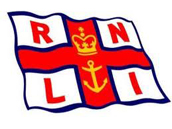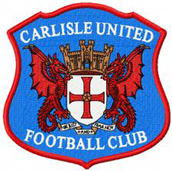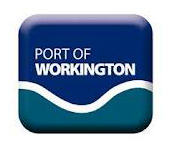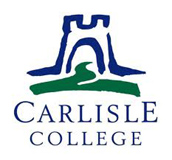- Home
- Scarrows
- Mariners
- Cumberland
- Miscellaneous
Quebec
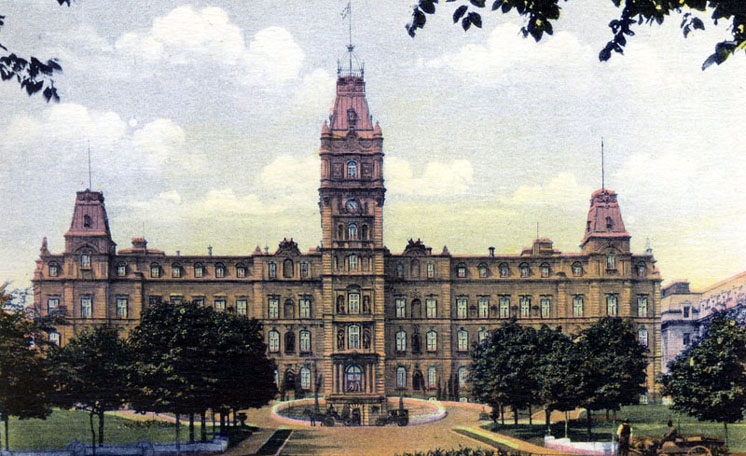
Quebec Parliament circa 1900
History
Quebec is Canada's oldest city, founded by Samuel de Champlain in 1608. Its name was an adaptation of the Algonquian word meaning "the river narrows here". Champlain chose this spot for the settlement because the high cliffs and narrowing of the St. Lawrence River offered excellent natural and strategic defences.
While regarded as the centre of New France, the growing North American empire of the French, the colony struggled. The harsh climate combined with the rough terrain failed to attract great numbers of French families to the New World. Further, many of the colony's few settlers were migrants-Couriers de bois-who would come in from the wilderness with furs they had gotten in barter with Native Americans. At one point, King Louis XIV had French women sent to New France as wives for the men who inhabited the fledging settlement. In 1666, 58 years after its founding, the population was only 547. Only with increased incentives and persuasion was France able to increase the number of permanent residents to 1,500 by the end of 1690, and to 34,000 by 1730.
In the 18th century, the city of Quebec finally began to grow. With a larger population, industry and trade flourished. Couriers de bois continued to bring pelts and furs into the marketplace to trade for other goods, which they could take back into the wilderness. Stores and workshops were built on the river's edge in the Lower Town.
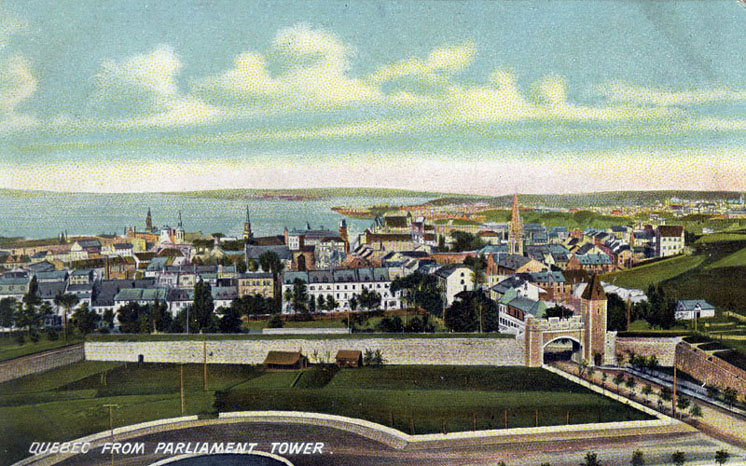
As the city grew in size, so did its economic and military importance. The French knew they needed to create a strong system of defences to protect the capital of New France from the enemy British, ensconced to the south in the American colonies. What they constructed was the Citadel. Perhaps the most famous of Quebec City's landmarks, it stands 106 metres above the city on Cap Diamant. It was assumed that an attack would come from the river, the city's most vulnerable point, and that is where the cannons were aimed. Unfortunately for the French, the British surprised the French. General James Wolfe and 4,500 British soldiers scaled the steep cliffs leading to the Plains of Abraham, under cover of darkness from September 12-13, 1759. The French commander, Lieutenant-General Louis de Montcalm, ordered his army to meet the enemy. In a battle that lasted 15 minutes, the British routed the defenders. They battered the city with cannon fire until the French army retreated to Montreal, where they would be defeated a year later and New France would fall to the British.
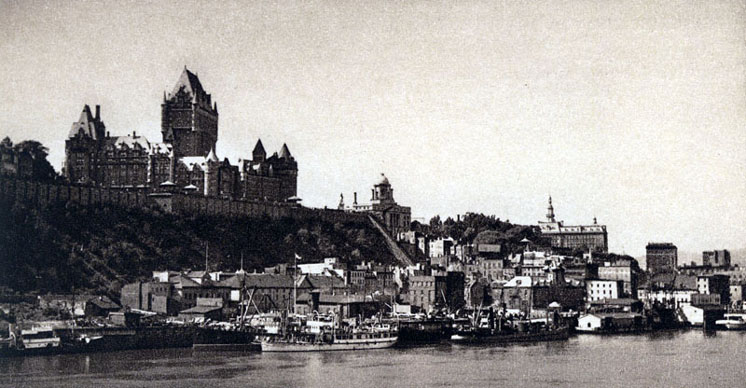
Quebec Harbour, circa 1900
The surrender of Quebec was followed by a period of military occupation and martial law until 1763, when a peace treaty was signed in Paris. With New France now secured as British North America, immigrants arrived to occupy existing cities and to build new ones. The large influx of British, Scottish and Irish immigrants into Quebec City created considerable tension, but it also fostered the international flavour the city still retains. A mingling of cultures over time has resulted in a unique lifestyle and atmosphere.
With the British came order and wealth, and the city grew in leaps and bounds. New sectors of the city were built with their own architecture and character. Agriculture flourished and trade routes extended deeper into the heart of the continent and into the American colonies. But beneath all the British influence remained the French identity. Citizens refused to give up their language or their culture to the English speaking authorities. In 1774, the British passed the Quebec Act, which allowed the French citizens to practice Roman Catholicism and to use French civil law. Still, French-speaking citizens struggled to preserve their culture. During the debates on Confederation in 1867, Quebec representatives refused to join unless guarantees were made to protect the identity of French-speaking people in the newly formed Dominion of Canada.
Imports
| Goods | Place of Origin |
|---|---|
| Machinery | Britain |
Exports
| Goods | Destination |
|---|---|
| Timber | Britain |
Industry
| Port Industries | Other Industries |
|---|---|
| Ship building and repairs | Services |
| Clothing | |
| Cigarettes | |
| Grain Milling |
Scarrow Associations
| Scarrow | Period |
|---|---|
| John Scarrow | 1929 |
| Joseph Scarrow | 1831-33, 1835-38, 1845-46, 1854 |
| William Scarrow | 1851-56, 1860, 1865 |

